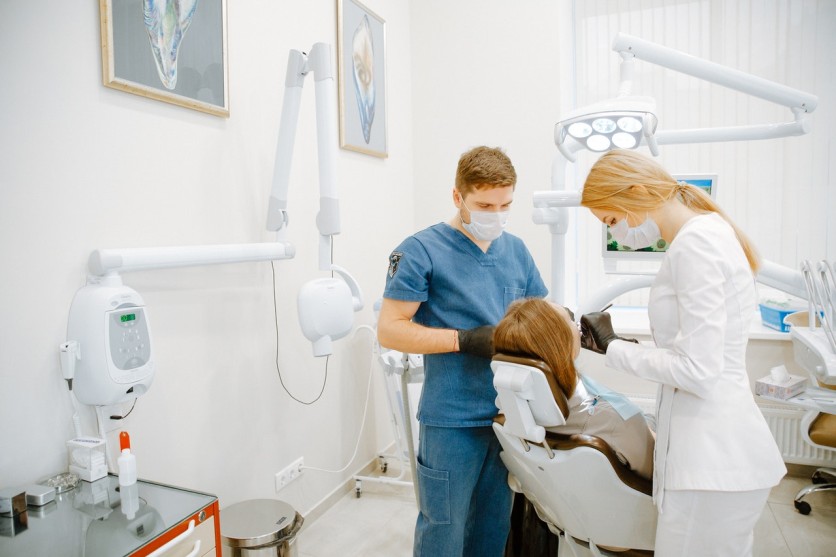
You might have been told your entire life that you need to brush, floss, and visit your dentist regularly. Few of us have ever questioned the necessity of this ritual, knowing that it has to do with our overall oral health. We do not even question when our dentist diagnoses a cavity or other dental concern, getting it taken care of and moving on with our lives.
We wanted to know more about how the diagnosis process works within a clinical dental practice and asked Oakville dentist. Dr. Iacovino for help. We want to share with you want we have learned.
The Visual
The first line of defense for a dentist or dental professional is a visual check. The eye is not going to be able to catch anywhere near issues that might be going on, but doing a visual exam can help identify indications of disease or issues that would not show up elsewhere.
In the diagnosis of periodontal disease, for example, there are three checks that go in place. The first is x-ray to identify bone-loss, the second is a periochart, where the gap around the teeth is measured, and a visual check. During a visual check, the dentist or hygienist can verify whether gums are inflamed and bleeding, a fact that will not show up on any other type of diagnosis, even if it is obvious.
X-rays
X-rays are incredibly important in terms of diagnosis, since they catch many pieces that would not be seen with the naked eye. They can look at the density of the enamel, showing soft spots or areas that might already have cavities. They can also show bone-loss under the roots of the teeth, most often coming from gum, or periodontal disease. They can even show infection, in the event that you are suffering from an abscess or other kind of dental issue.
X-rays are not perfect, however. They do not show everything. Their limitation is in part due to the layout of each patient's teeth. Patients with straighter and evenly-spaced teeth will have an easier time with the x-rays than someone who has crooked teeth with a lot of crowding. X-rays are also limited because they often cannot show breaks within the teeth, because breaks are too fine to be picked up typically, and there are just too many other things within your mouth to make those types of readings clear. Regardless, they can reveal much of what otherwise might not have been seen and are important in diagnosis.
Perio Chart
A perio chart is the measurements in millimeters of space between your teeth and your gums. The measurement might seem a little bit unexpected if you do not know what it is for. A perio chart is used to help diagnose periodontal disease or early indications of it. A normal perio chart reading is with 1, 2, or 3 millimeters measured around your teeth. The bigger the numbers are, the more at risk you are of developing gum disease.
The readings from a perio chart are not a diagnosis by themselves, but need to be accompanied by x-rays in order to adequate diagnose gum concerns. Some people do have deeper pockets naturally, but those people are few and far between. These readings are normally recorded once a year.
Coding
Dental offices always use procedure codes to list out what is planned or has been completed on each patient. These codes, called CDT codes, are mandated by the ADA, not by individual offices. The use of the codes from a clinical standpoint makes it easy to identify what exactly was doing to each patient. It even works if the patient moves or is referred out, since another dentist would also be able to see which codes were used to indicate a procedure.
When dealing with dental insurance, the codes become all the more important. Insurance companies will not pay on a large dental bill simply based on the codes, however, and still require offices to supply proof that such procedures were necessary. Offices use the same codes for billing to provide a generally cohesive process from start to finish.
The Bottom Line
Ultimately, when it comes to clinical diagnosis, a dentist will use several different tools before confirming one diagnosis over another. Given the nature of most dental concerns, a dentist should be able to effectively diagnose concerns or problems with the use of x-rays and a physical oral exam. Combined, the dentist will be able to see what is on the outside of the teeth and compare it to what was picked up on by the x-ray for the inside of the teeth.
No dentist will be perfect all of the time, but generally speaking, their experience and tools will be able to give them the best diagnosis possible.
ⓒ 2026 TECHTIMES.com All rights reserved. Do not reproduce without permission.




